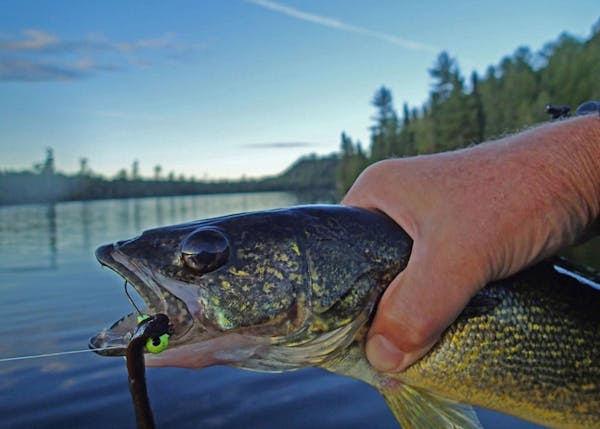A ban on lead used in fishing equipment — sinkers and jigs — is again being discussed at the Legislature.
Lead poisons any animal that ingests it. The impetus this year was discovery of dead trumpeter swans that were believed to have swallowed lost lead fishing gear while feeding.
Lead pellets, leftovers from the days when lead birdshot was legal for waterfowl hunting, also are a problem. Lead shot was banned nationwide in 1991. Lead remains on lake bottoms, however, and it never breaks down.
Loons swallow the old pellets while searching for small stones needed in their gizzards to aid digestion. Swans can ingest lead fishing tackle or shotgun pellets as they forage lake bottoms for food.
Eagles and other raptors eat deer killed but not found or guts left behind when a deer is field-dressed. They eat game birds that were killed or wounded but not recovered. All can contain fragments of lead.
I was curious about how lead causes injury to swans, loons, eagles and other raptors. My questions, addressed to the Raptor Center at the University of Minnesota, were specific to eagles.
"Lead is one of the most frustrating things we treat here," said Dr. Victoria Hall, executive director of the center.
Over 85% of the eagles admitted to the center have a detectable level of lead in their bodies, she said. As many as 25 to 30% of those eagles will have a toxic lead level that kills them, she said.
It only takes a piece of lead the size of a grain of rice to kill a bird. There are several types of lead bullets. Some can break into dozens of fragments when entering a deer.
The fragments, sometimes too small to be seen, can penetrate as far as 18 inches from the path of the bullet, according to Minnesota DNR research. There is no known safe exposure level.
"We see eagles that come in with food still in their stomach, in excellent body condition, and the damage by lead to their nervous system is already too severe to save them, even when we try to treat them," Hall said.
The biology of this was explained by Dr. Dana Franzen-Klein, who is head clinical veterinarian at the Raptor Center.
"When birds eat lead, the soft metal enters the very acidic stomach where the metal dissolves and is absorbed into the bloodstream," she said.
The lead causes red blood cells to burst, making the bird anemic.
Lead damages the bird's nervous system, resulting in irreversible damage to the brain.
It causes permanent neurological damage. The bird will start to have seizures, appear extremely depressed, and be unable to walk or breathe normally; it will gasp.
The lead will travel to and damage the bird's kidneys and heart. Heart damage can be permanent, so even if clinic staff helps the bird through the toxicity, it will never have the endurance it needs to fly free again, Franzen-Klein said.
"If a bird comes in with a toxic lead level and is already showing severe outward signs of lead toxicity, then the most we can do is to humanely euthanize it," she said.
How long does it take an eagle with lead in its system, unfound and untreated, to die in the wild?
"It can be a period of hours to a day or two," Franzen-Klein said.
A very small lead fragment can produce symptoms within hours.
If exposed to a smaller amount of lead, it could take days or weeks for the bird to die, Franzen-Klein said.
"Eagles exposed to very high doses of lead often don't stand a chance of successful treatment no matter what we try; the damage is fast and permanent.
"For lower doses of lead, if the bird is found within a few hours or a day or two of exposure, we might stand a chance of saving them," Franzen-Klein said.
"Eagles are more sensitive to lead toxicity than swans and some other species," she said.
Swans are sometimes able to recover from a blood lead level that will kill an eagle. Treatment is slightly different for each of these species.
From 2010 to 2020, the Raptor Center admitted 202 eagles where lead was one of the health issues. When lead was the only issue, 24 birds recovered, and were released to the wild.
Because of similar problems with condors, California banned all lead ammunition in 1993. Use of lead ammunition in federal wildlife refuges was banned during the Obama administration. That ban was overturned by the Trump administration.
The only restriction on lead ammunition in effect here is the federal law pertaining to waterfowl. Minnesota has no regulations on use of lead for hunting other animals. There are no rules regarding lead used in fishing.
There are nontoxic substitutes in all cases. Use is voluntary.
Lifelong birder Jim Williams can be reached at woodduck38@gmail.com.
A Georgia beach aims to disrupt Black students' spring bash after big crowds brought chaos in 2023
Today in History: April 18, San Francisco's great earthquake sets off fires, thousands die

Gallery: AJR performs at Xcel
After 40 years in Park City, Sundance exploring options for 2027 film festival and beyond

